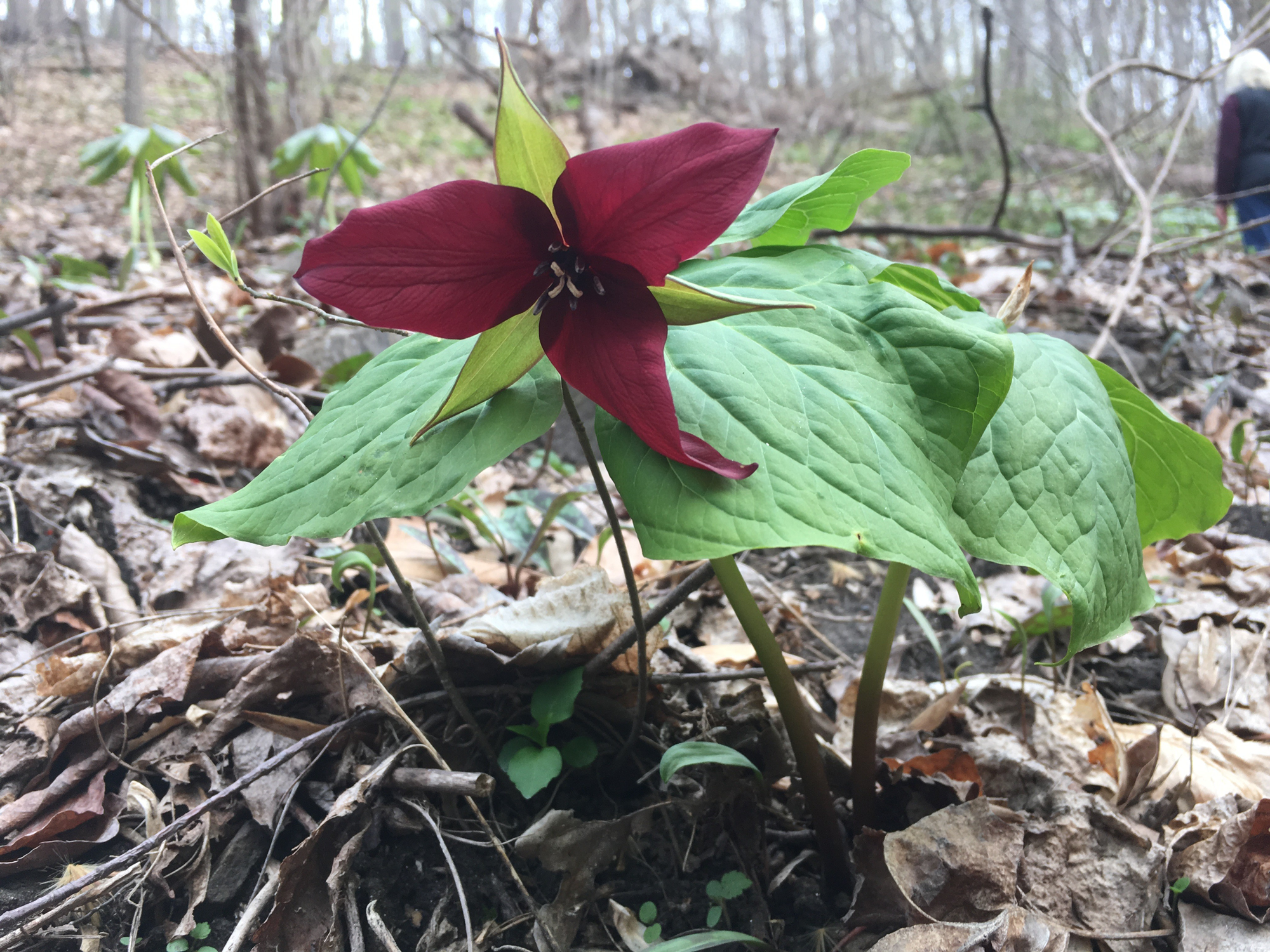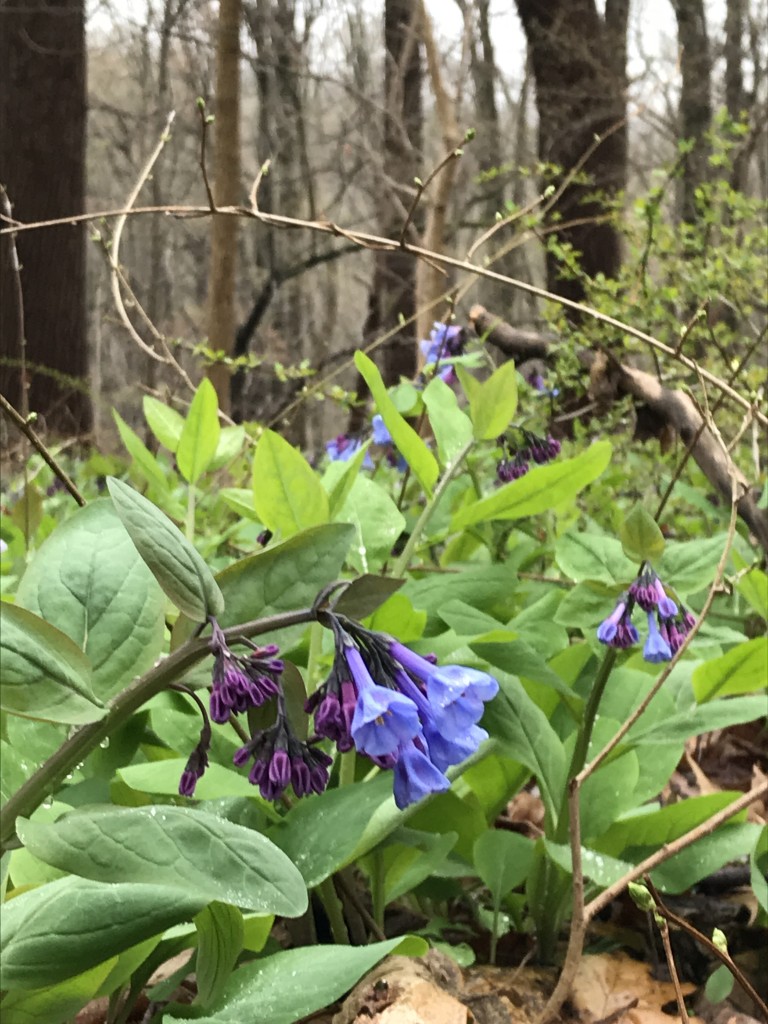
Photo courtesy of Will Terry.
By Mike Weilbacher, Executive Director
Like all forests around us, the Schuylkill Center is in full bloom right now. You really have to see it to believe it. In fact, you can, if you simply walk down our Ravine Loop.
Like the red trillium in the accompanying photograph, an elusive and rare plant that New Englanders dubbed “wake robin,” as it bloomed there about when robins return north from their migrations (robins are year-round residents here in Roxborough).
Or the Virginia bluebells in the other photo– one of everyone’s favorites, as it is taller than many of the spring ephemerals and one of the bluest of them all. You can find it on our Ravine Loop and elsewhere across the property, and is happily one of our harder-to-miss wildflowers. I love its pink buds that open to blue flowers– two colors for the price of one.

Photo courtesy of Anna Lehr Mueser
But that’s just the beginning of the parade. There are bright yellow trout lilies, named for the spotting on their mottled leaves that resembles a trout’s back. And shooting stars, white flowers blazing across the forest floor. Jacob’s ladder, a complicated lilac-colored flower with ladder-ish leaves. Jack-in-the-pulpit, poking through the forest floor, Jack dutifully staying inside what looks like his mottled purple lectern. Solomon’s seal, named for the Biblical king, its delicate bell-like flowers dangling from zig-zags of leaves. Spring beauties, each petal a tiny white surfboard with a pink racing stripe down its middle.
And that’s just a start.
What’s amazing about these plants is the narrow window of time through which they slide. A forest in spring features trees without yet any leaves, so sunlight shines through and caresses the forest floor. Warmed by the sun, long-dormant roots and rhizomes suddenly come alive and send sprigs of growth up above the ground. These leaves photosynthesize– remember that from high school biology?– using sunlight to make sugars and send starches down into the rootstocks so they grow larger. When those rootstocks are large enough and have the resources, the plants send flowers into the world, often brightly colored to dazzle pollinating bees and butterflies.
And they coincidentally dazzle us too.
But the flowers are in a race against time– and the trees. As trees leaf out, those leaves block sunlight, form a sun-proof umbrella across the forest, and block those flowers from growing. So there is a small window of opportunity for the flowers to warm up, grow, make leaves, make flowers, get pollinated, drop seeds– and disappear for another year– before the trees leaf out.
We’ve already missed the earliest bloomers like bloodroot and skunk cabbage. But every day or every week you visit, new and different flowers will appear.
While our Visitor Center is closed, our forest is still open– park in the Hagy’s Mill parking lot if there is room (if not, park at the ballfields and walk in). Hike past our Visitor Center and head downhill through the butterfly meadow, following Ravine Loop until it curves at Smith Run; the best wildflowers are on the section of trail that parallels the stream.
When we reopen (please, God, soon!), we’ll be selling these plants for you to place in your own yard. My yard, I am happy to report, is beginning to fill with both bluebells and Solomon’s seal, and a healthy stand of May apple– it looks like a little bright green umbrella– is spreading happily. These flowers require little water or chemicals, come back stronger every year, and provide vital pollen, nectar, and food for the small critters that hold up the world, especially those pollinators you read so much about.
Spring wildflowers are racing the trees right now– come walk down our Ravine Loop, while of course practicing the required physical distancing, and see them for yourself.
